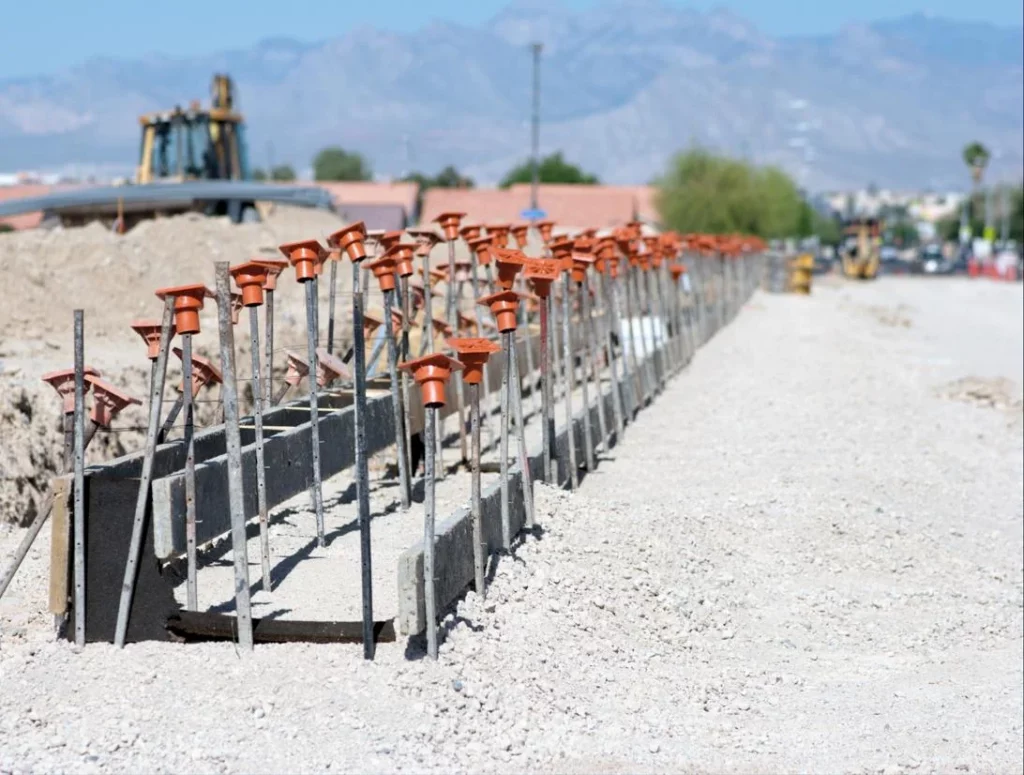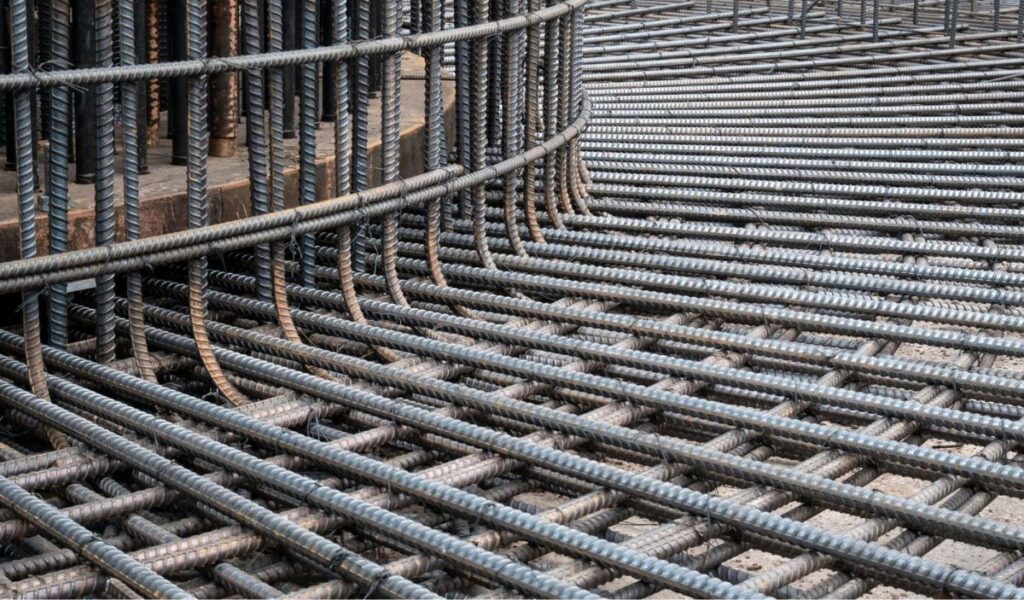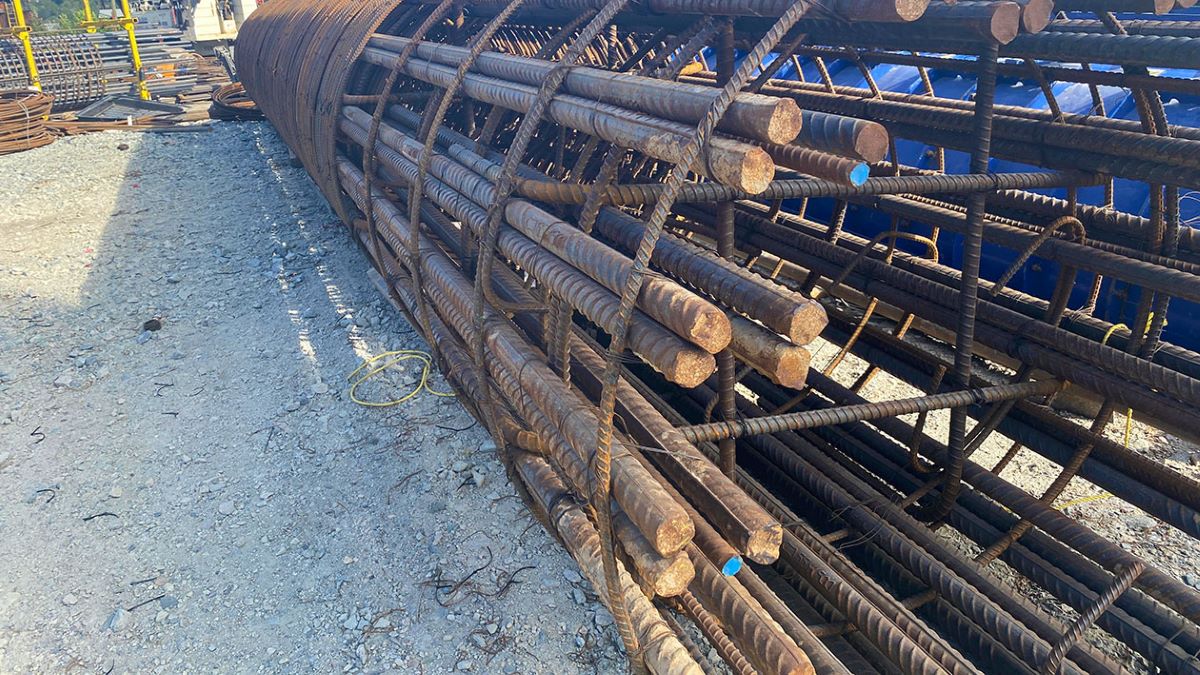Reo bars are an essential part of reinforced concrete structures used in construction across Australia. They provide the necessary strength to overcome the weakness of concrete, making it capable of supporting heavy loads. Whether it’s tall buildings in Sydney or coastal infrastructure in Queensland, these steel bars play a crucial role in ensuring the durability and safety of our man-made environment.
However, storing and transporting reo bars safely can be challenging. Factors such as moisture exposure can lead to expensive corrosion, improper handling can result in workplace accidents, and poor storage practices can waste materials, impacting budgets and schedules. Additionally, Australia’s diverse climate conditions, including humid coastal areas and dry inland regions, add further complexity to these tasks.
In this comprehensive guide, we will share effective strategies for maintaining the quality of reo bars during storage and transportation. Our aim is to provide practical techniques that will protect your investment, prioritise worker safety, and uphold the structural integrity required for successful construction projects in Australia. By following these expert tips on how to store and transport reo bars safely, you can avoid common mistakes while maximising material performance and project efficiency.
Why Is Proper Storage Crucial for Reo Bars?
Reo bar storage directly impacts the structural performance of your concrete projects. When reinforcement bars come into contact with moisture and soil, oxidation begins immediately, creating rust that weakens the steel’s core strength. This corrosion process accelerates in humid Australian climates, particularly in coastal regions where salt air compounds the problem.
The financial consequences of poor construction material protection extend far beyond material replacement costs. Corroded reo bars compromise the bond between steel and concrete, reducing load-bearing capacity and potentially requiring complete structural remediation. You face delays, increased labour costs, and potential safety liabilities when compromised reinforcement fails inspection standards.
Corrosion prevention through proper storage practices delivers measurable benefits:
- Extended material lifespan – protecting your investment in quality steel
- Maintained structural integrity – ensuring bars meet Australian Standards specifications
- Reduced project delays – eliminating the need to source replacement materials
- Cost savings – preventing wastage that can reach 15-20% of total reo bar purchases
Quality storage practices transform your construction materials from potential liabilities into reliable structural components that perform as engineered throughout the project lifecycle.
How Should Reo Bars Be Stored to Prevent Damage?
Implementing proper reo bar storage conditions forms the foundation of quality preservation throughout your construction project. You must elevate all reinforcement bars at least 150-200 mm above ground using sturdy platforms or timber skids. This above ground storage prevents direct soil contact and allows air circulation beneath the bars, significantly reducing moisture retention.
Protective coatings become essential when you’re working in coastal or humid Australian environments. Apply cement wash or specialised anti-corrosion treatments to create a barrier against salt air and excessive moisture. These coatings extend the lifespan of your reo bars and maintain their structural integrity even in challenging conditions.
Segregation by size and classification streamlines your storage system whilst reducing material wastage. You should:
- Group bars by diameter (8mm, 12mm, 16mm, etc.) in separate stacks
- Classify by grade (Grade 250N, 500N) using distinct storage areas
- Label each stack clearly with size and grade information
- Position frequently used sizes in easily accessible locations
This systematic approach enables quick identification during construction phases and prevents the costly mistake of using incorrect bar specifications in critical structural elements.
What Are the Best Practices for Stacking Reo Bars Safely?
Stacking reo bars requires careful attention to construction site safety protocols to prevent accidents and material damage. Creating neat staggered piles with adequate spacing between each layer allows for thorough inspection and improves handling efficiency during retrieval operations.
Safe piling techniques demand strict adherence to height restrictions. You should limit stack height to a maximum of 4.5 metres to maintain structural stability and comply with Australian fire safety regulations. This height restriction prevents dangerous toppling incidents that could injure workers or damage surrounding materials.
Proper spacing considerations include:
- Minimum 600mm clearance between parallel stacks for worker access
- Adequate inspection gaps to identify potential corrosion or damage
- Clear sight lines for crane operators during lifting operations
Strategic placement of reo bar stacks prevents obstruction of access routes and passageways throughout your construction site. You must ensure emergency vehicle access remains unimpeded whilst maintaining efficient workflow patterns for daily operations.
These Top Tips for Safe Storage and Transport of Reo Bars create safer working environments whilst protecting your valuable reinforcement materials from unnecessary handling damage.
How Can Transport of Reo Bars Be Managed Securely?
Transporting reo bars requires meticulous planning to prevent damage and maintain structural integrity. Proper bundling forms the foundation of secure transport – you must group bars of similar lengths and diameters together using steel wire or approved strapping materials at regular intervals. This prevents individual bars from shifting during transit and reduces the risk of bending under their own weight.
Vehicle selection plays a crucial role in securing reinforcement bars. Trucks equipped with locking pins or internal restraint systems provide essential stability during transport. You should ensure the vehicle’s load capacity matches the weight of your reo bars, accounting for both the steel weight and bundling materials.
Safe loading unloading procedures demand careful coordination between crane operators and ground personnel. Position lifting equipment at designated lifting points to distribute weight evenly across the bundle. You must inspect each bundle before loading to identify any loose or protruding bars that could create hazards during transport.
During unloading operations, establish clear communication protocols between all team members. Designate specific areas for placement that allow immediate inspection of the delivered materials while maintaining site safety standards.

What Safety Measures Should Workers Follow When Handling Reo Bars?
Worker safety handling reo bars requires strict adherence to protective protocols due to the inherent dangers these materials present. Reo bars pose significant risks through their substantial weight – individual bars can weigh between 4-47 kilograms depending on diameter and length – combined with razor-sharp cut ends that can cause severe lacerations during handling operations.
Essential protective equipment includes:
- Heavy-duty leather gloves with reinforced palms to prevent cuts from sharp edges
- Steel-toed safety boots to protect feet from dropped bars
- High-visibility safety vests for clear identification on busy construction sites
- Hard hats to guard against overhead hazards during stacking operations
Protective clothing construction sites must enforce extends beyond personal equipment to environmental safety measures. Storage areas require compliance with fire safety regulations, particularly when flammable materials like timber formwork or fuel containers are present nearby. You must maintain clear evacuation routes around reo bar storage zones and ensure adequate spacing between different material types.
Proper lifting techniques become critical when handling longer bars – you should always use mechanical aids like cranes or forklifts for bars exceeding 6 metres in length to prevent back injuries and maintain control during positioning.
How Does Environmental Protection Enhance Reo Bar Longevity During Storage?
Environmental protection reo bars require strategic measures to combat Australia’s harsh weather conditions. Coastal construction sites face particular challenges where salt-laden air accelerates corrosion processes, making rust resistance coastal areas a critical consideration for project longevity.
Rust-resistant reo bars prove essential for coastal infrastructure projects. These specialised reinforcement bars feature protective coatings or galvanised surfaces that withstand marine environments. You’ll find these bars maintain structural integrity for decades longer than standard variants, reducing replacement costs and extending project lifespans significantly.
UV-resistant chain & shade mesh provides dual protection during storage periods. The mesh systems offer:
- 50% coverage options for moderate sun protection
- 90% coverage variants for maximum weather shielding
- Rain deflection capabilities preventing water pooling
- Wind barrier properties reducing debris accumulation
You can position these protective coverings over storage areas to create controlled microclimates. The mesh systems prevent direct UV exposure that can degrade protective coatings on reo bars whilst maintaining adequate ventilation. This approach proves particularly valuable during extended storage periods where bars await installation phases.
These environmental measures directly impact your project’s structural performance and cost-effectiveness.
What Role Does Proper Labeling Play in Managing Stored Reo Bars?
Labeling reo bars transforms chaotic storage areas into organised, efficient workspaces where you can locate specific materials within seconds. The systematic approach of classification marking reinforcement bars prevents costly delays and reduces material wastage across Australian construction sites.
Colour-coded identification systems provide the most effective method for distinguishing between different bar sizes and grades:
- Red paint for 12mm diameter bars
- Blue markings for 16mm reinforcement
- Yellow indicators for 20mm bars
- Green identification for specialty grades
You should apply these colour codes to both ends of each bundle, ensuring visibility from multiple angles during storage and retrieval operations. This dual-marking approach eliminates confusion when bars are stacked in tight configurations.
The inventory management benefits extend beyond simple identification. When you implement consistent marking systems, your site supervisors can conduct accurate stock counts without physically handling every bundle. This efficiency translates directly into reduced labour costs and improved project scheduling.
Proper marking also prevents the common mistake of using incorrect bar grades in critical structural elements, protecting both project integrity and your reputation.
How Can Construction Sites Optimize Space While Maintaining Safety With Reo Bar Storage?
Space optimization on construction sites requires strategic planning that balances storage efficiency with operational safety. You need to design your storage layout with vehicle access as the primary consideration, ensuring delivery trucks and cranes can manoeuvre freely during loading and unloading operations. Position reo bar storage areas along designated roadways where heavy machinery can operate without creating bottlenecks or safety hazards.
Safe layout for reo bar storage demands careful attention to site circulation patterns. You must avoid placing stacks in passageways, walkways, or areas that obstruct stairways and emergency exits. This prevents dangerous situations where workers might need to navigate around protruding bars or climb over storage piles.
Create designated zones for different reo bar sizes and grades, allowing you to maximize vertical space whilst maintaining horizontal accessibility. Consider implementing a grid system that allocates specific areas for storage whilst preserving clear corridors for movement. You should maintain minimum clearances of 1.2 metres between storage stacks and main thoroughfares, ensuring forklifts and personnel can pass safely without compromising the integrity of stored materials or creating collision risks.

Conclusion
Implementing these best practices for reo bar storage and transport protocols transforms your construction site operations whilst protecting your material investments. You reduce wastage by up to 30% when you follow proper elevation, stacking, and environmental protection guidelines. These construction material safety measures directly impact your project’s structural integrity and bottom line.
Australian construction projects demand precision in material handling. You enhance structural performance by maintaining reo bar quality from delivery through installation. Your commitment to these storage and transport standards creates safer work environments, reduces replacement costs, and ensures compliance with Australian building codes.
These Top Tips for Safe Storage and Transport of Reo Bars provide the foundation for successful project delivery across diverse Australian conditions.

